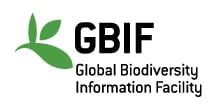(Right now the "Previous" and "Next" doesn't maintain serial. We're working to getting it fixed,)
Scientific Name: Corvospongilla burmanica
Synonym: Spongilla burmanica Kirkpatrick, 1908 Spongilla loricata var. burmanica Kirkpatrick, 1908 (Currently unaccepted)
English Name: Freshwater sponge
Local/Bangla Name: Sadupanir sponge(স্বাদুপানির স্পঞ্জ )
Classification:
Kingdom: Animalia
Phylum: Porifera
Class: Demospongiae
Order: Spongillida
Family: Spongillidae
Description:
The body surface of Corvospongilla burmanica is characterized by a coarse hispid texture, resulting from the protrusion of skeletal fibers. The sponge forms flat and extensive encrustations. Oscula are typically elevated on turret-like eminences or irregular-shaped protrusions. The skeleton has a net-like or reticulate structure, composed mainly of well-developed spicule fibers with a minimal amount of spongin. While the live sponge has a rigid but brittle consistency, the dry sponge usually appears pale brown. The megascleres in Corvospongilla burmanica are identified as amphistrongyla. These large spicules are slightly bent, entirely smooth, and exhibit terminal swelling. They have a length and width ranging from 220-235 µm and 20 µm, respectively. Microscleres, known as microbirotulates, have a slightly curved smooth shaft and a small number of medium-sized recurved hooks at the terminal end. On average, they measure 30 µm in length, with a rotule diameter ranging from 6-12 µm. Gemmoscleres, which are also amphistrongyla, vary from slightly to strongly curved and are relatively stout and short. They are covered with fine spicules or tubercles, with a length and width ranging from 38-56 µm and 7-8 µm, respectively. Gemmules are not highly abundant, relatively large, and subspherical. They are usually singly attached to the substratum but occasionally found free in the inner symplasm. The attached gemmules have a weakly developed pneumatic coat, while the free ones exhibit a well-developed pneumatic coat. Gemmoscleres form concentric layers on the inner gemmular membrane, and the foraminal tube is short, cylindrical, and porous.
Habitat & Distribution in Bangladesh:
Free-swimming ciliated larvae (parenchymula) are discharged outside into the S water; the larvae swim about but soon become attached to some solid object and remain fixed for life. Distributed from Myanmar to India, as well as in the freshwater-bodies of Bangladesh.
Environment:
Freshwater
Main References:
Kabir SMH, Ahmad M, Ahmed ATA, Rahman AKA, Haque EU, Ahmed ZU, Begum ZNT, Hassan MA, Khondker M (2008) Encyclopedia of Flora and Fauna of Bangladesh, Vol 14. Protozoa- Gastrotricha Asiatic Society of Bangladesh, Dhaka: 335 pp


